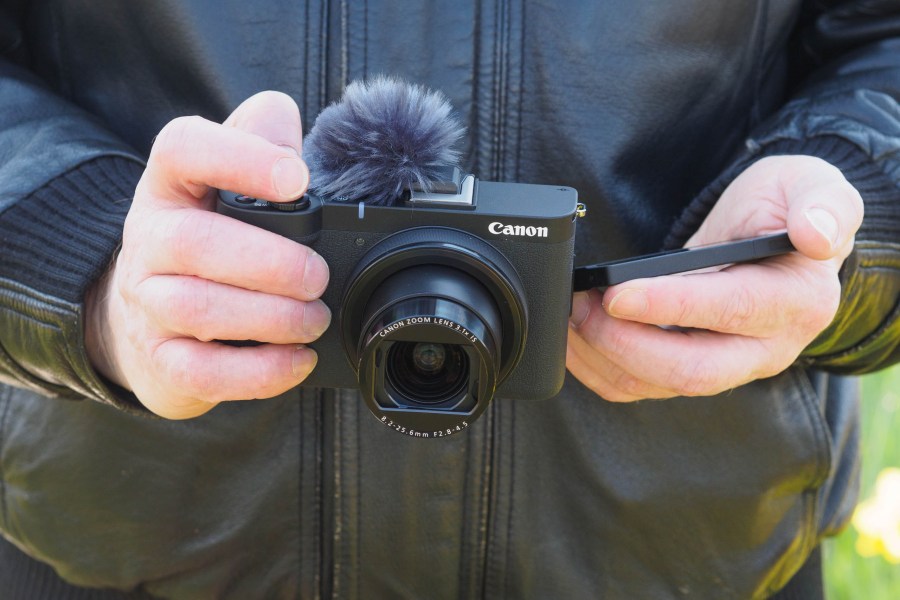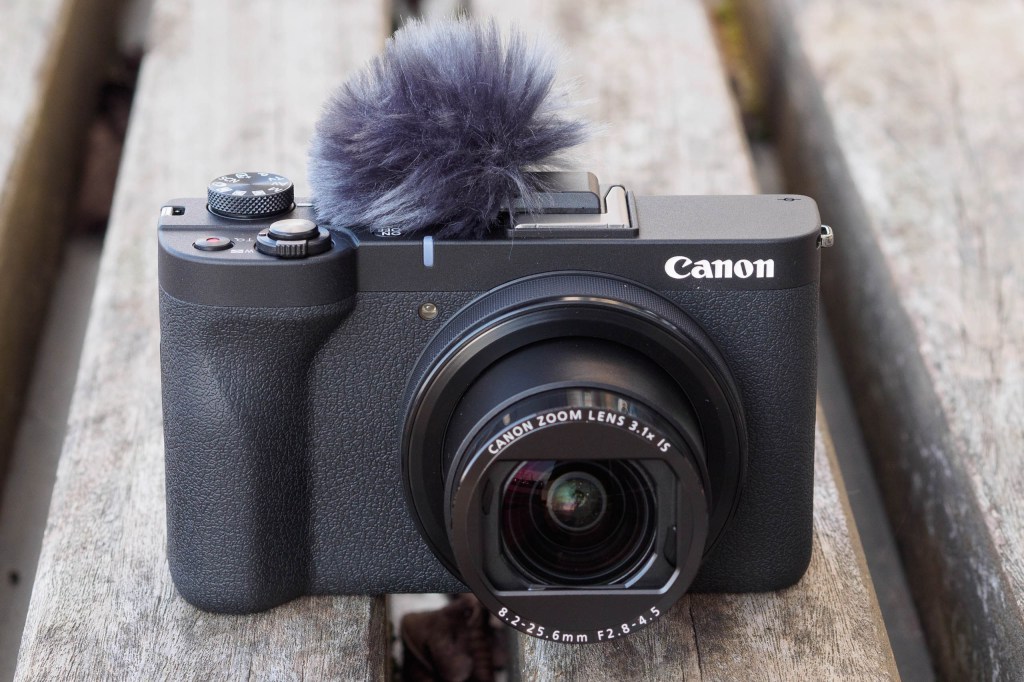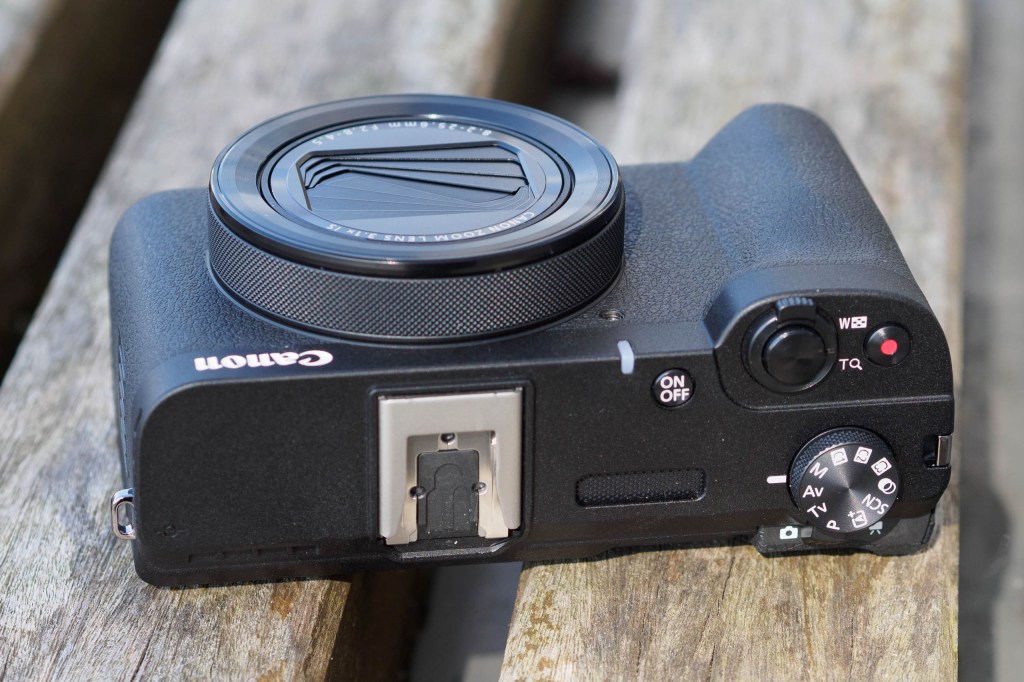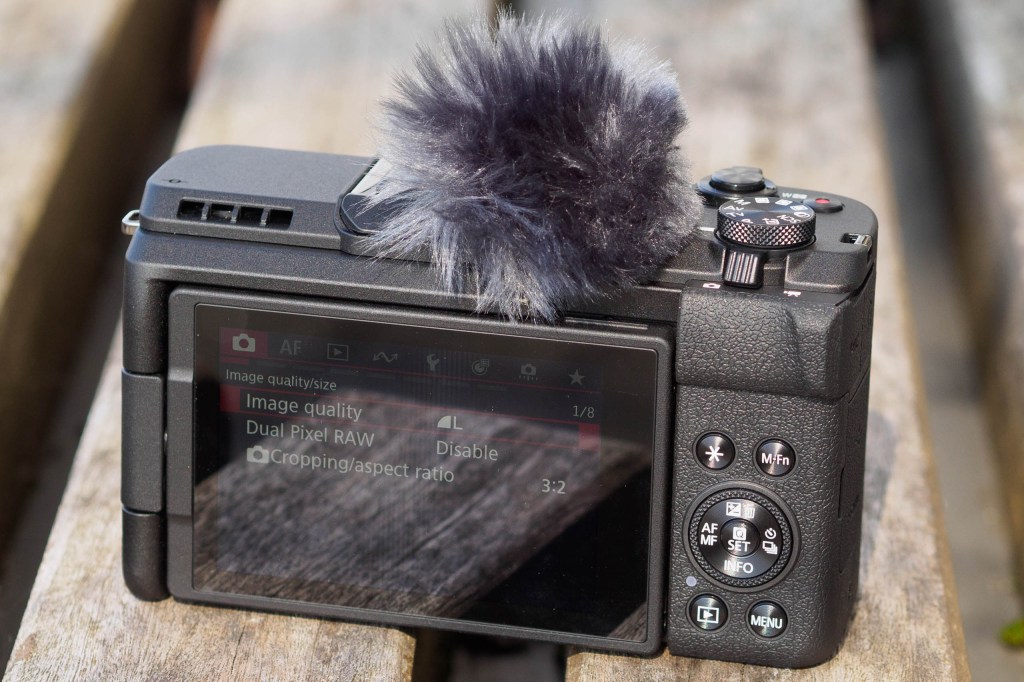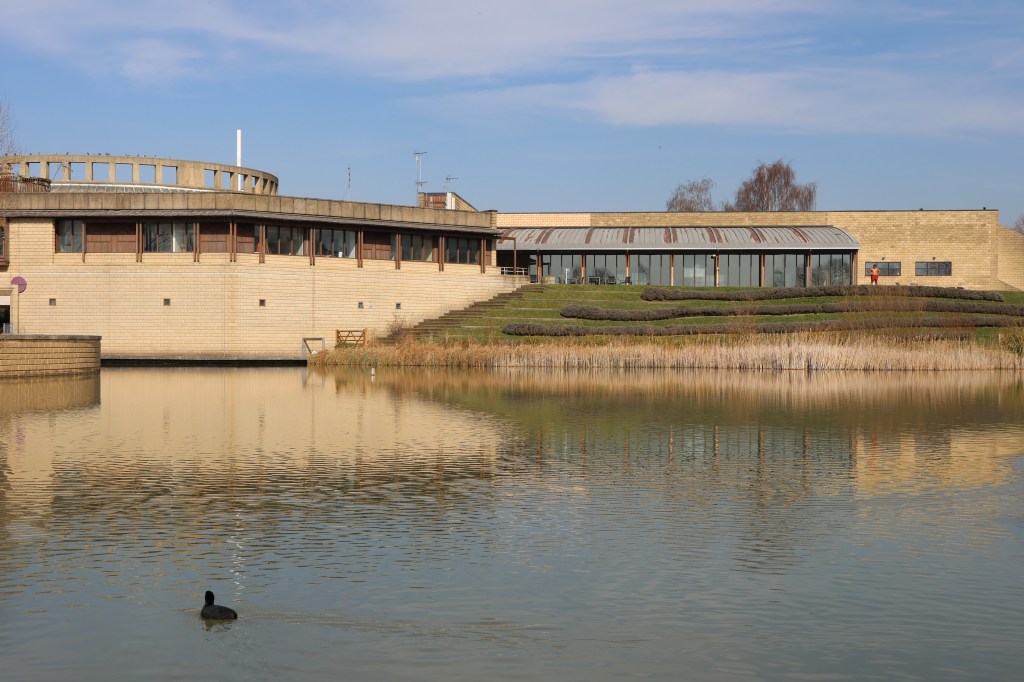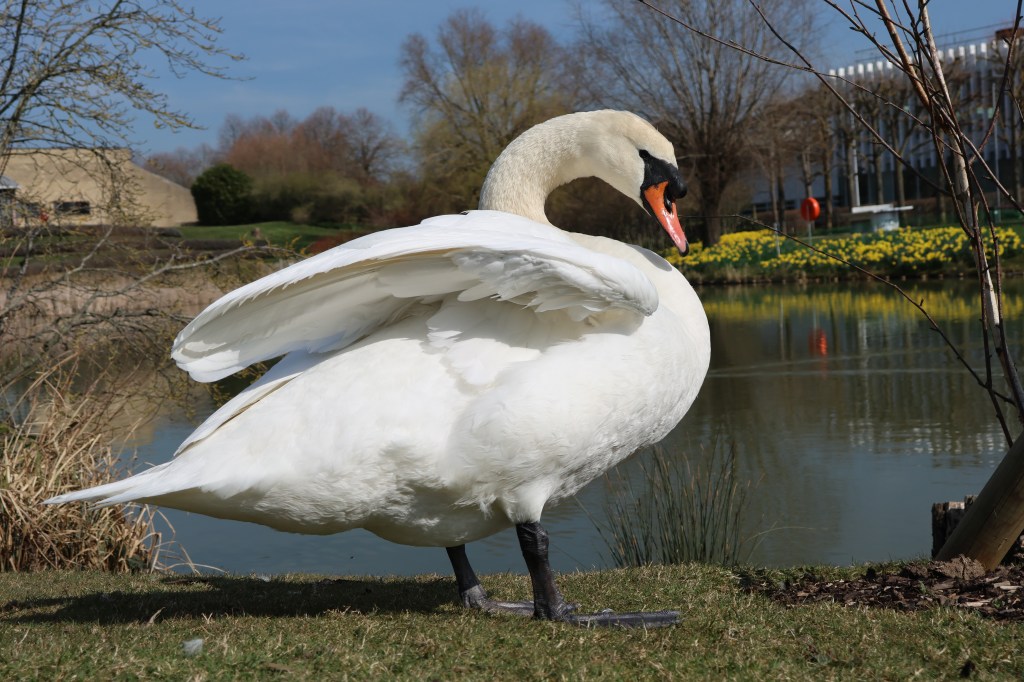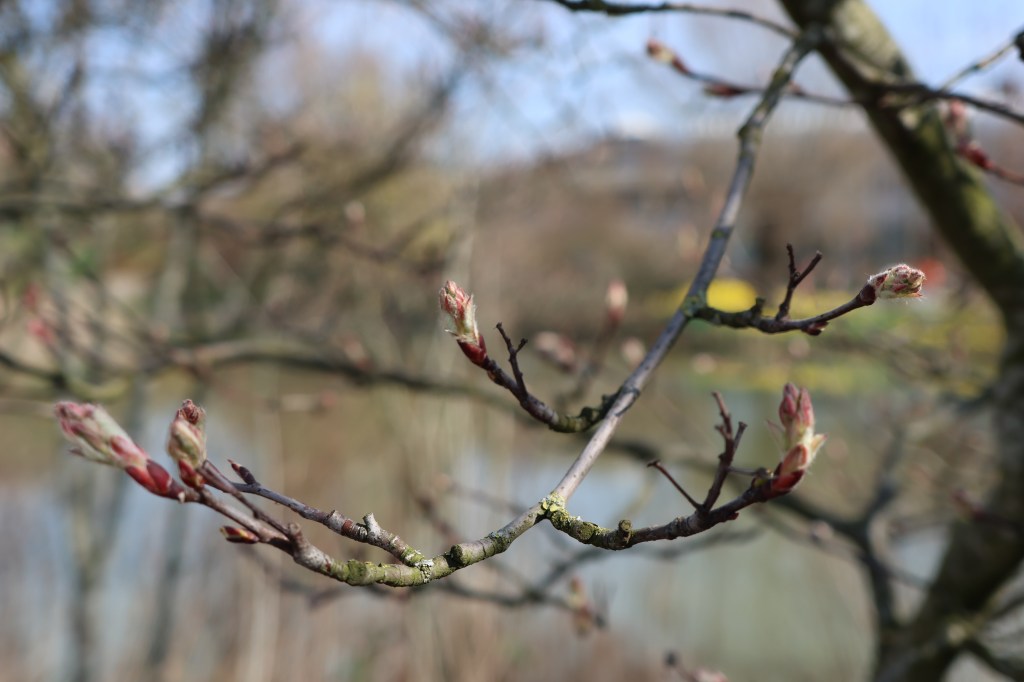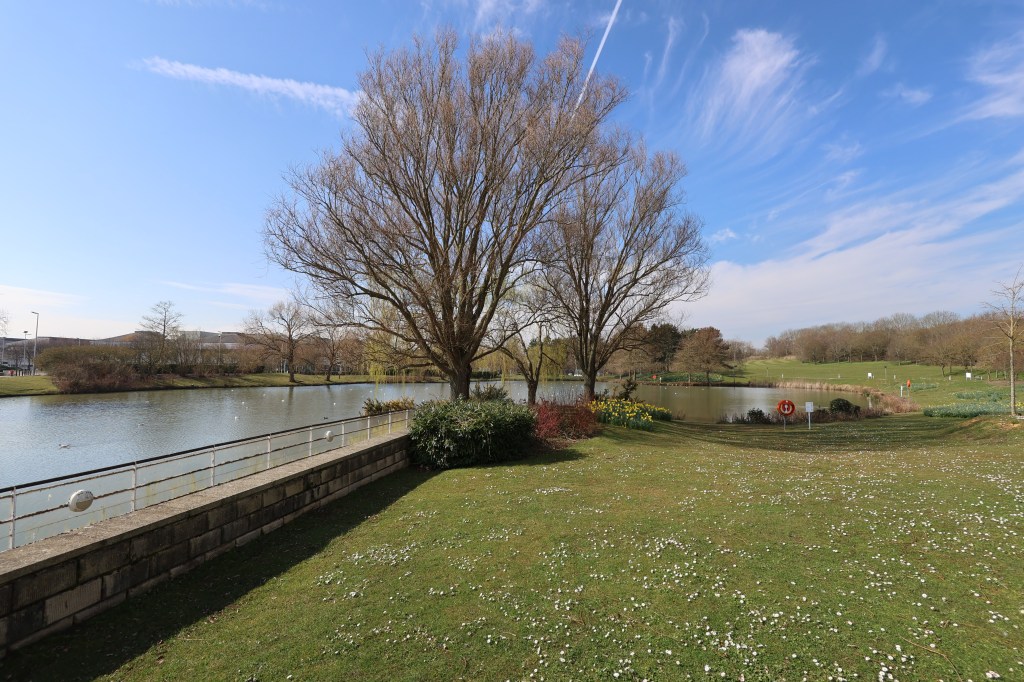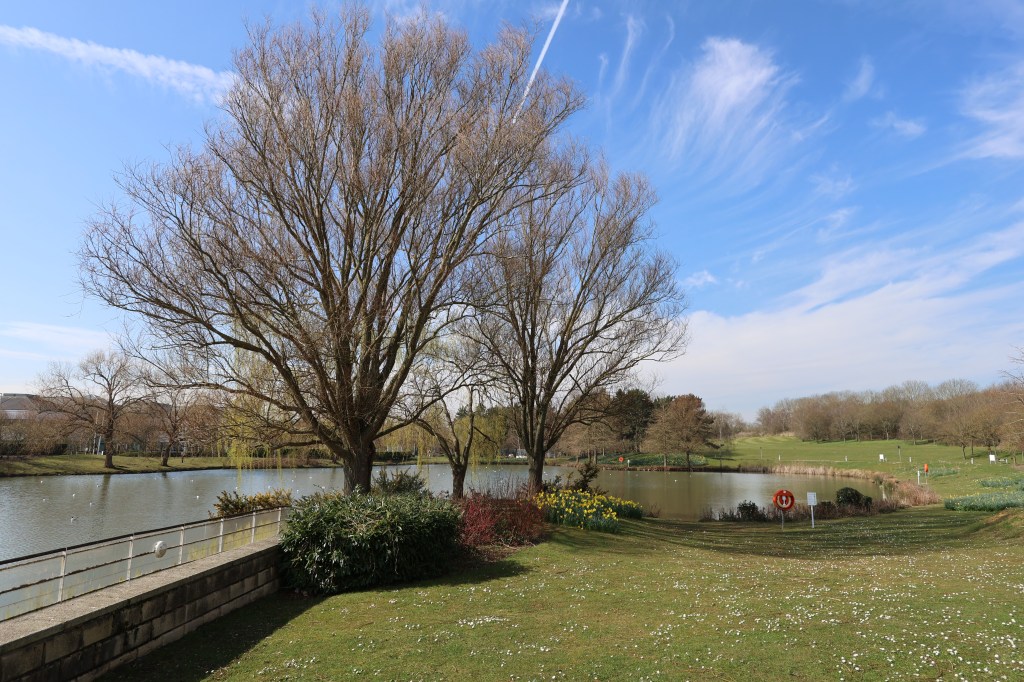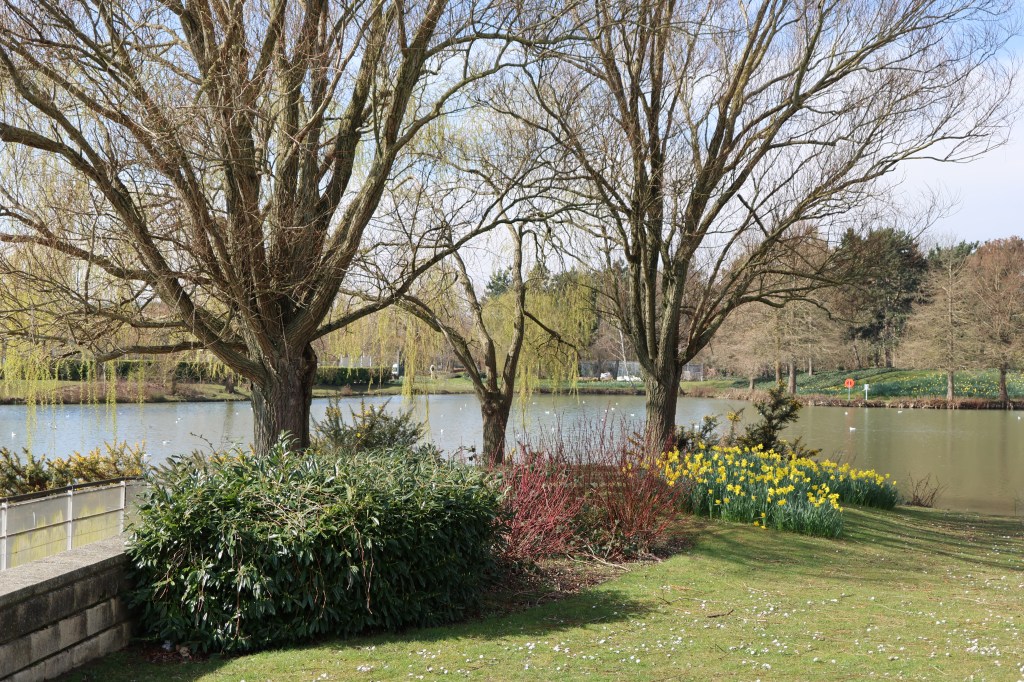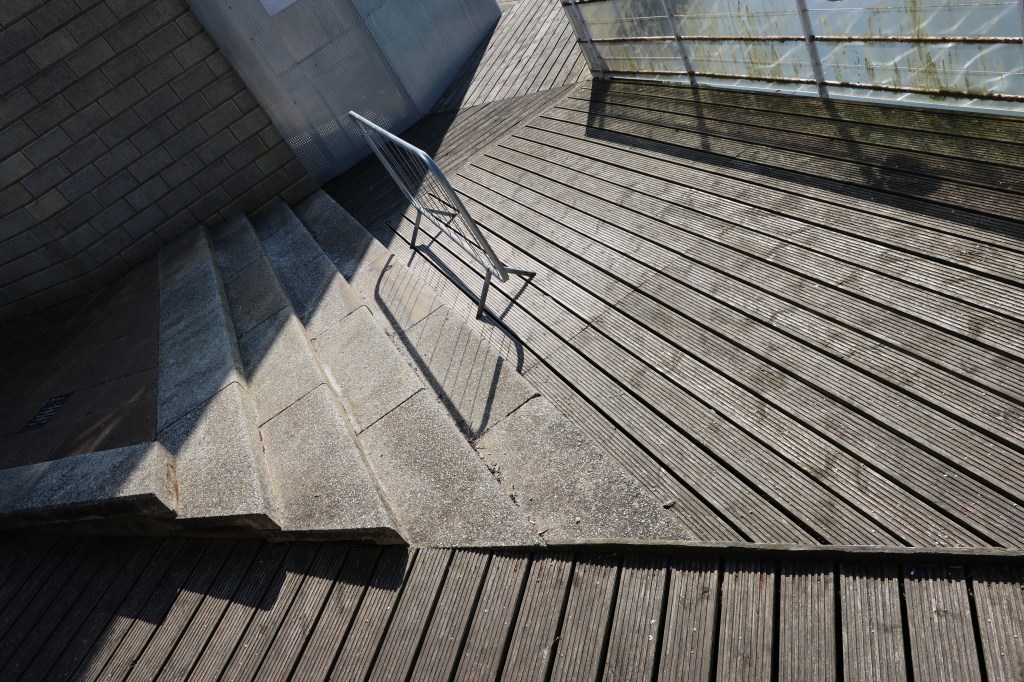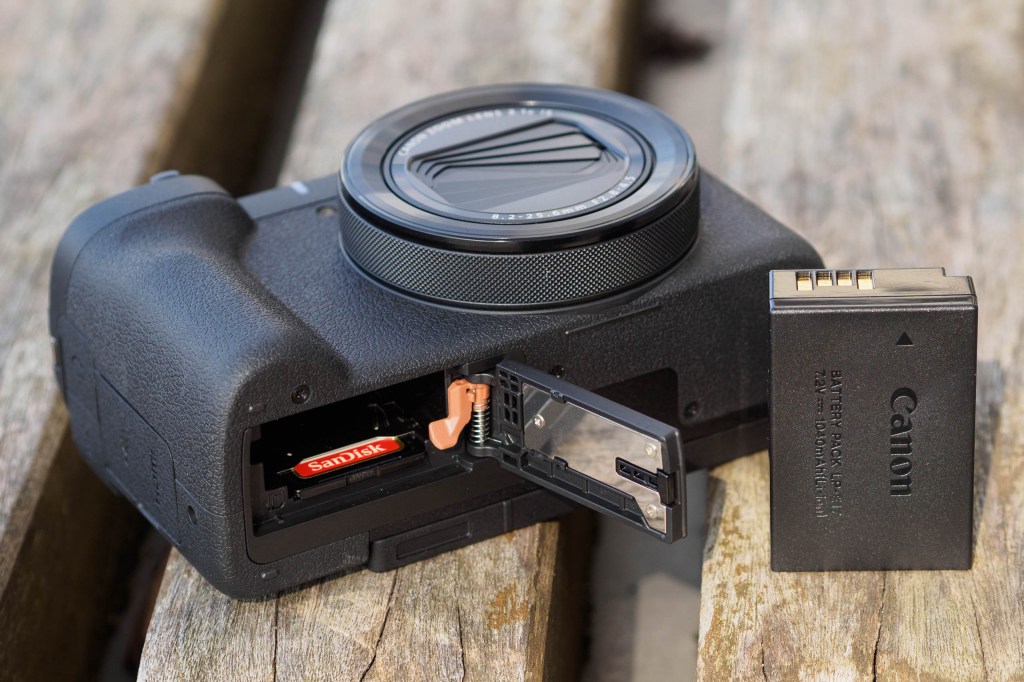Canon has just announced its first new zoom compact camera with a built-in lens in six years, the Canon PowerShot V1. It looks a lot like the popular PowerShot G7 X Mark III, but that ‘V’ means it’s much more focused on video. If you’re a photographer, you might think Canon has abandoned you, but I’ve used the Canon V1 and it’s a great camera for shooting still images, too. In fact it looks set to be one of the best compact cameras for photographers.
Canon PowerShot V1 at a glance:
- $899.99 / £959.99
- 22.3MP 1.4in-type sensor
- 16-50mm equivalent f/2.8-4.5 lens
- 3in, 1.04m-dot fully articulated touchscreen
- Up to 30 fps continuous shooting
- 4K 30p video (unlimited recording)
Canon used to make loads of compact cameras, with its G-series being real favourites among enthusiast photographers, all the way back to the original G1 in 2000. Originally, they were advanced cameras for enthusiast photographers, when DSLRs were wildly expensive – in fact my first digital camera was the PowerShot G2. New models used to appear like clockwork every year, right up until 2019, with the G5 X Mark II and G7 X Mark III. But since then… nothing.
Now we have the V1, which resembles the G7 X III but is a bit bigger and chunkier, although it’ll still fit into a coat pocket. Everything about it is new, though, with an ultra-wideangle 16-50mm equivalent zoom lens that’s designed for arms-length vlogging, but should also be interesting for photographers, especially for such things as landscapes and architecture. It uses a 22.3MP sensor that’s about a quarter of the area of full-frame, and which appears to be a smaller version of the Canon EOS R7’s 32.5MP APS-C chip.
For all the techy details about the camera, read our Canon PowerShot V1 review: hands-on first look
That chunky body houses a built-in fan, with Canon promising 4K recording times limited only by the battery and card space. There are plenty of advanced video features onboard, too. A furry windshield for the built-in stereo microphone comes in the box, and slots onto the hot shoe on top.
Canon has made a point of designing the handgrip so it works well both when you’re holding the camera normally, and pointing it back towards you for selfies or vlogging. You shoot using a side-hinged fully articulated screen, in contrast to the tilt-only unit on the G7 X III. There’s no viewfinder, though, which some will find disappointing.
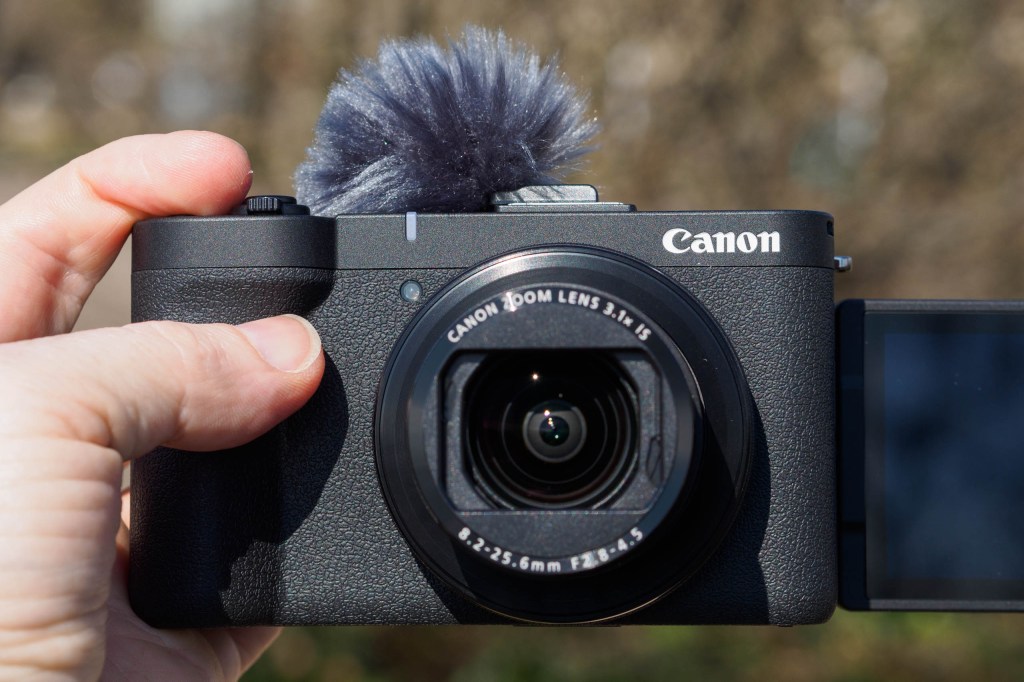
While the V1 is in effect Canon’s answer to the popular Sony ZV-1 II vlog camera, it’s rather different in its operational philosophy. Sony designed the ZV range for vloggers who don’t want to learn how to use a camera, with results-focused options such as “Background Defocus” and “Product Showcase”. While that makes perfect sense for the target audience, it means they’re not much fun to use for photography.
In contrast, the V1 still has all the traditional controls placed front and centre, which is a really good thing for photographers. In fact, I can’t help but feel that the Canon V1 is the camera the Sony ZV-1 II really wants to be when it grows up.
The Canon V1 shooting experience
I got a chance to try out the Canon V1 for a couple of hours before its launch, and crucially go out and take some photos with it. And to be honest, the shooting experience isn’t that different to using my old G7 X Mark II.
You get a conventional mode dial on top, with Canon’s usual P, Av, Tv and M settings, plus a large control dial around the lens for adjusting exposure settings. This dial rotates smoothly and doesn’t click, but it has enough resistance that I didn’t find myself changing things by accident.
One thing you don’t get on the V1 is an exposure compensation dial; instead that requires pressing the ‘up’ button on the back, then spinning the lens dial. It’s a step backwards, but tolerable. The M-Fn button and the onscreen Q menu give you quick access to all the settings you might want to change regularly.
You can let the camera decide the focus point itself, or specify it by tapping on the screen. Canon has also included its latest subject detection autofocus, which had no trouble identifying birds including a swan and a cormorant. I didn’t get to test it with a wider range of subjects, but it works really well on Canon’s other cameras.
I was quite happy shooting with the side-hinged vari-angle screen. Personally I prefer this design to tilt-only units, as it remains useful when you turn the camera 90° for vertical shooting. It’s also much easier to use on lightweight cameras like the V1 compared to larger models, where your left hand will normally be supporting the lens. But I know others feel differently – and very strongly – about this.
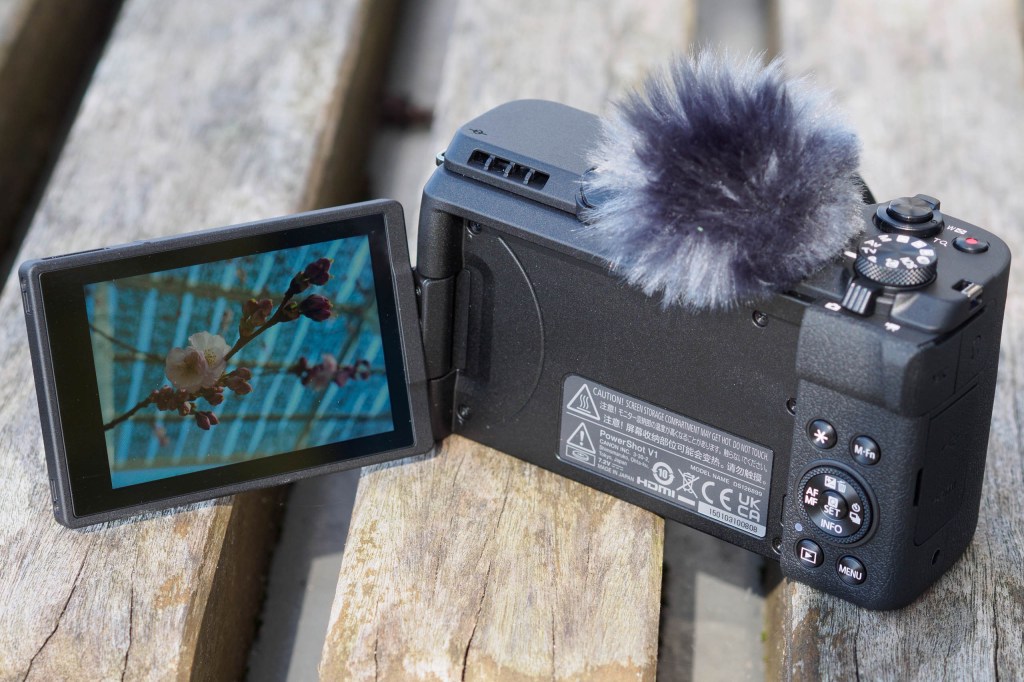
We were lucky enough to have a nice sunny day for trying out the Canon V1, which was welcome after a cold grey winter in the UK. I did find screen to be a bit dim for these conditions, even when turned up to its maximum brightness. But that’s common with the LED screens used by most cameras, and an area where the latest smartphones win by miles, with their ultra-bright OLED displays.
Image quality: initial impressions
So how about image quality? I shot 90-odd frames with the Canon V1, all outdoors in good light, and at first sight, the results look pretty good. With no raw file support, I’ve only got JPEGs to look at for now. But they look very nice, with Canon’s usual attractive colour rendition and well-judged exposure and white balance. I never had to go higher than ISO 200, though, so we’ll have to wait and see how low-light images turn out.
Below is a slideshow of images shot using the Canon V1. These are all unedited JPEGs directly from the camera. Click on any image to see the full resolution version.
I was quite impressed by the lens too, given its small size and ultra-wide angle. It’s possible to pick out flaws if you stare at files too closely; for example, there’s some smearing in the corners at wideangle. But the results are just fine if you’re more interested in looking at your photos as whole, rather than pixel-peeping stuff that probably doesn’t matter – and you really should be.
Summing-up
Overall, I was impressed by the Canon V1 – probably more than I was expecting. It’s small but handles well, and gives nice-looking images, at least in good light. While it is, of course, very video focused, it doesn’t give up on traditional controls like the Sony ZV-E1 Mark II. So if you know your way around a camera, it’s a much nicer shooting experience.
There are compromises, of course. I’d always prefer to have a viewfinder, and on balance I’d rather have a less wide, but longer lens. Hopefully Canon will address these issues by reviving the more photo-focused G-series.
Despite this, I can see a lot of photographers being really interested by the V1. And as long as they have realistic expectations, I don’t think they’ll be disappointed. Of course it’s possible there are some drawbacks that will show up in more extended testing, but right now it’s a thumbs-up for the Canon V1.
The Canon PowerShot V1 is due in the shops on 10th April for $899.99 / £959.99
Related content:
- Canon EOS R50 V released: an APS-C mirrorless camera for video
- New Canon RF-S 14-30mm F4-6.3 IS STM PZ powerzoom lens
- Canon RF 20mm F1.4 L VCM announced: premium large-aperture wideangle prime
Follow AP on Facebook, X, Instagram, YouTube and TikTok.

